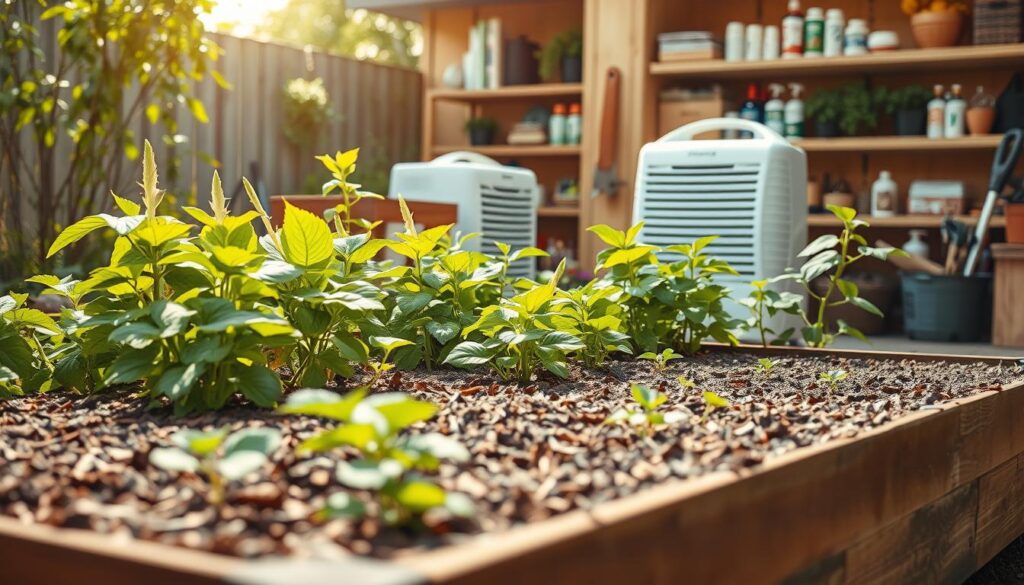White mold can be a significant problem for both home gardens and commercial growers, affecting a wide variety of plants, including vegetables, ornamentals, and beans. This issue often arises due to excessive water and high humidity, creating an ideal environment for mold growth. If left unchecked, it can lead to severe damage, reducing yields and plant health.
Fortunately, managing white mold doesn’t have to be overwhelming. This article provides expert-backed advice and actionable tips to help gardeners maintain healthy plants and prevent infestations. By adopting cultural practices and timely interventions, you can protect your plants and enjoy a thriving garden. Whether you’re a seasoned gardener or just starting out, these strategies will give you the confidence to tackle the problem head-on.
Understanding White Mold on Plants
White mold, scientifically known as Sclerotinia sclerotiorum, is a fungal disease that affects a wide variety of plants, including vegetables, ornamentals, and beans. It thrives in cool, moist environments, producing cottony mycelium and sclerotia, which are resting structures that help the fungus survive unfavorable conditions.
What is White Mold and How It Spreads
The fungus spreads through spores, which are dispersed primarily by wind, rainsplash, and insects. These spores can travel long distances, infecting healthy plants and causing widespread damage. White mold infection typically occurs in the spring when temperatures are cool, and soil moisture is high, creating an ideal environment for the fungus to grow.
Recognizing Symptoms in Various Plant Species
Symptoms of white mold vary depending on the plant species but often include wilted leaves, stem cankers, and the formation of sclerotia. Infected stems may display white, fuzzy growth, while leaves may turn yellow and drop prematurely. Early recognition of these signs is crucial for effective management and preventing further spread of the disease.
In summary, understanding the lifecycle and spread of white mold is essential for taking proactive measures to protect your plants. By recognizing the symptoms early and implementing control strategies, you can minimize the impact of this disease and maintain a healthy garden.
Preventative Strategies for a Healthy Garden
Preventing white mold begins with creating an environment where the fungus can’t thrive. By focusing on soil health, watering practices, and air circulation, you can significantly reduce the risk of infection.
Improving Soil Drainage and Watering Practices
Proper soil drainage is crucial. Avoid overwatering, as it creates a moist environment perfect for mold growth. Water your plants early in the day using drip or soaker hoses to minimize leaf wetness, which helps prevent the fungus from taking hold.
Enhancing Air Circulation and Proper Plant Spacing
Good air circulation is key. Ensure your plants have enough space to allow air to move freely around them. Select cultivars with an open growth habit to improve airflow. Avoid using overhead sprinklers, as they can leave prolonged moisture on foliage, increasing infection risk.
| Strategy | Benefits |
|---|---|
| Proper Soil Drainage | Prevents waterlogging, reducing mold growth |
| Watering Early in the Day | Allows leaves to dry before nightfall |
| Improved Air Circulation | Reduces humidity, slowing mold spread |

By implementing these strategies, you can create a healthier garden environment, making it difficult for white mold to take hold. These practices not only prevent disease but also promote overall plant health and vigor.
Effective Methods to Get Rid of White Mold
Managing white mold requires a combination of careful pruning and proper disposal techniques. Acting quickly is essential to prevent the spread of this disease.
Safe Pruning and Removal of Infected Plant Parts
When dealing with infected plants, it’s crucial to remove the diseased portions safely. Cut at least 4-5 inches below the infected area to ensure you eliminate all disease-carrying tissue. This method helps prevent the fungus from spreading further.
Regularly inspect your plants and remove any infected leaves or stems immediately. This proactive approach reduces the risk of spore release and limits the spread of the disease.
Proper Disposal Techniques: Burning vs. Composting
Dispose of infected plant material carefully to avoid spreading the disease. Burning is an effective method as it completely destroys the fungus. Deep burial, at least 12 inches underground, can also be used, but it’s less reliable as sclerotia can survive and infect other plants.
Composting is not recommended for infected material, as the sclerotia can withstand high temperatures and re-infest your garden. Always prioritize methods that ensure thorough elimination of the fungus.
| Disposal Method | Effectiveness | Risk of Spread |
|---|---|---|
| Burning | High | Low |
| Deep Burial | Medium | Medium |
| Composting | Low | High |
By following these disposal methods, you can effectively manage white mold and protect your garden from further infection.
Cultural Practices to Minimize Infection Risk
Adopting the right cultural practices is key to reducing the risk of white mold in your garden. By focusing on resistant plant varieties, proper maintenance, and optimized irrigation, you can create an environment less conducive to fungal growth. Research from the University of Wisconsin and the University of Minnesota highlights these strategies as effective in minimizing infection risks.
Selecting Resistant Plant Varieties
Choosing plant varieties with natural resistance to white mold is a proactive step. Check seed catalogs or consult with local nurseries to find cultivars bred for resistance. This simple choice can significantly lower the chances of infection.
Timely Maintenance and Weed Control
Regular garden maintenance is crucial. Remove weeds promptly, as they can host the fungus. Keeping your garden free of debris reduces potential reservoirs for white mold, preventing its spread.
Optimizing Irrigation Techniques to Prevent Fungal Growth
Use soaker hoses or drip irrigation to avoid wetting leaves, which can encourage mold. Avoid overhead sprinklers and ensure plants are spaced well to improve air circulation, aiding in faster drying.
| Strategy | Benefits |
|---|---|
| Selecting Resistant Varieties | Reduces infection risk through natural resistance |
| Proper Irrigation | Minimizes leaf moisture, deterring mold growth |
| Timely Maintenance | Eliminates potential fungal reservoirs |

By implementing these cultural practices, you can effectively minimize the risk of white mold, ensuring a healthier garden environment.
Wrapping Up Your White Mold Management Journey
Managing white mold is a journey that requires attention to detail and consistent effort. By understanding the disease, taking preventive measures, and acting quickly when needed, you can protect your plants and maintain a healthy garden.
Key strategies include identifying early signs of infection, improving soil and water conditions, and ensuring good air circulation. Regular inspections and proper disposal of infected material are also crucial for preventing the spread of the disease.
Cultural practices, such as choosing resistant plant varieties and optimizing irrigation, can significantly reduce the risk of white mold. These practices not only help in managing the disease but also promote overall plant health and growth.
Remember, vigilance is key. By staying proactive and implementing these tips, you can enjoy a thriving garden year after year. Share your success stories and help others in their journey to rid their plants of white mold!
